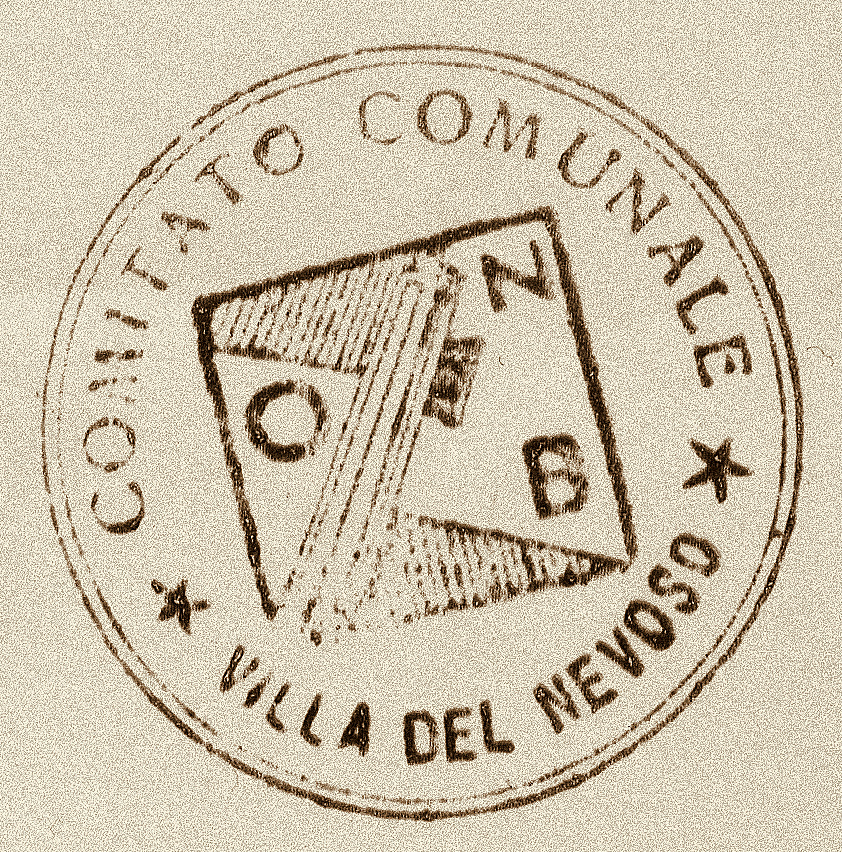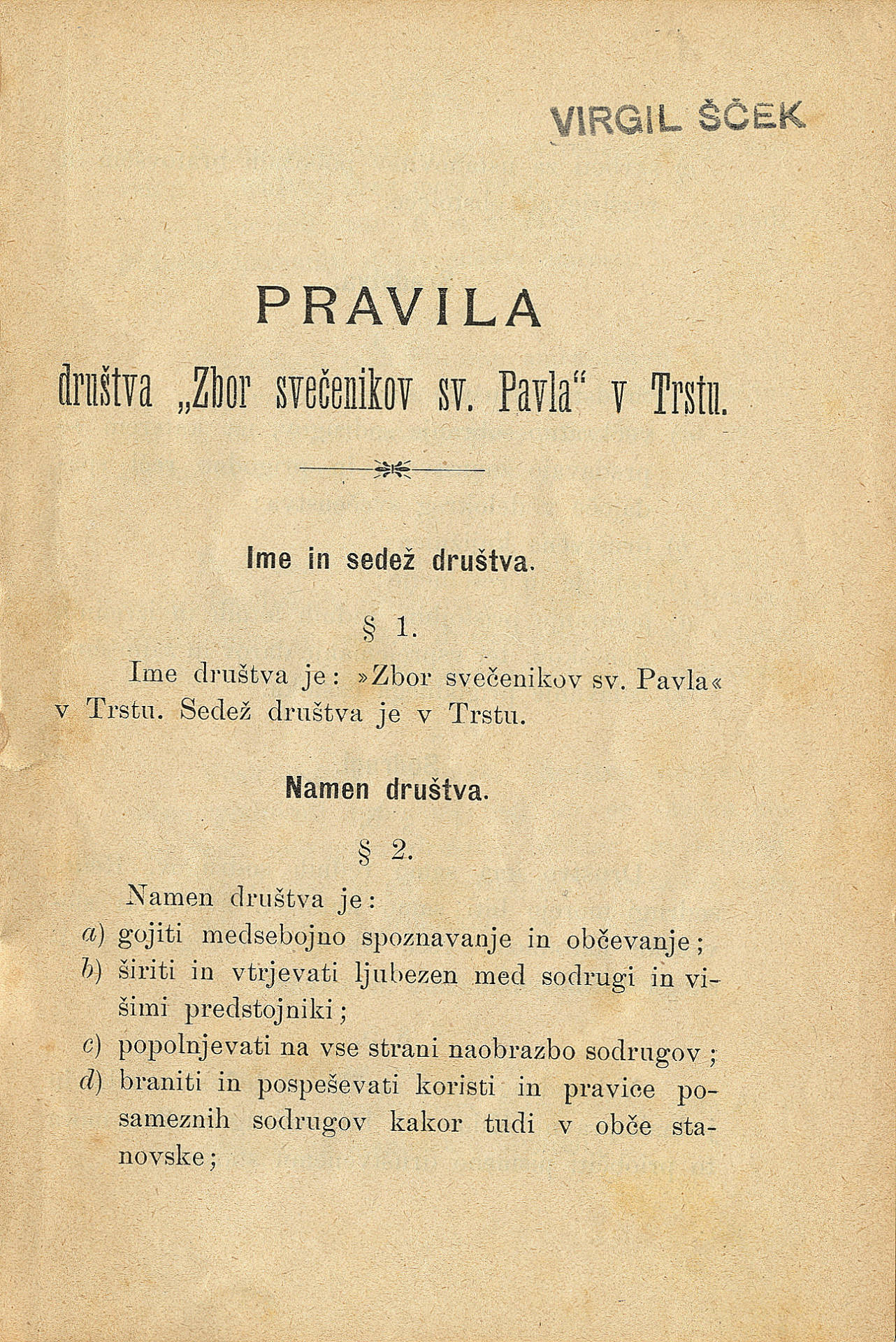Following the dissolution of clubs and societies, political parties and the print media, it was the clergy – almost all of whose members had remained in their posts – who filled the void that had formed following the persecution and emigration of politicians and teachers. They organised themselves as the Congregation of Devotees of St Paul. Organisations such as the Marian Society became centres of instruction and education. Choral singing was limited to church choirs, which also began incorporating profane songs into their repertoire. Members of the clergy also did the lion’s share of the work of teaching the Slovene language – the mother tongue of their flock – which they taught in the context of religious instruction. The Fascist authorities were well aware of the role played by priests and saw their activities as the last obstacle to the assimilation of the minority. Even during the period of occupation, numerous local priests were replaced by military curates. Later, local Fascist authorities waged a deliberate campaign against individual priests and demanded their replacement. From 1930 onwards they even faced prosecution.
Priests continued to sustain their people even during the Second World War. Many of them supported the national liberation movement and collaborated actively with it.
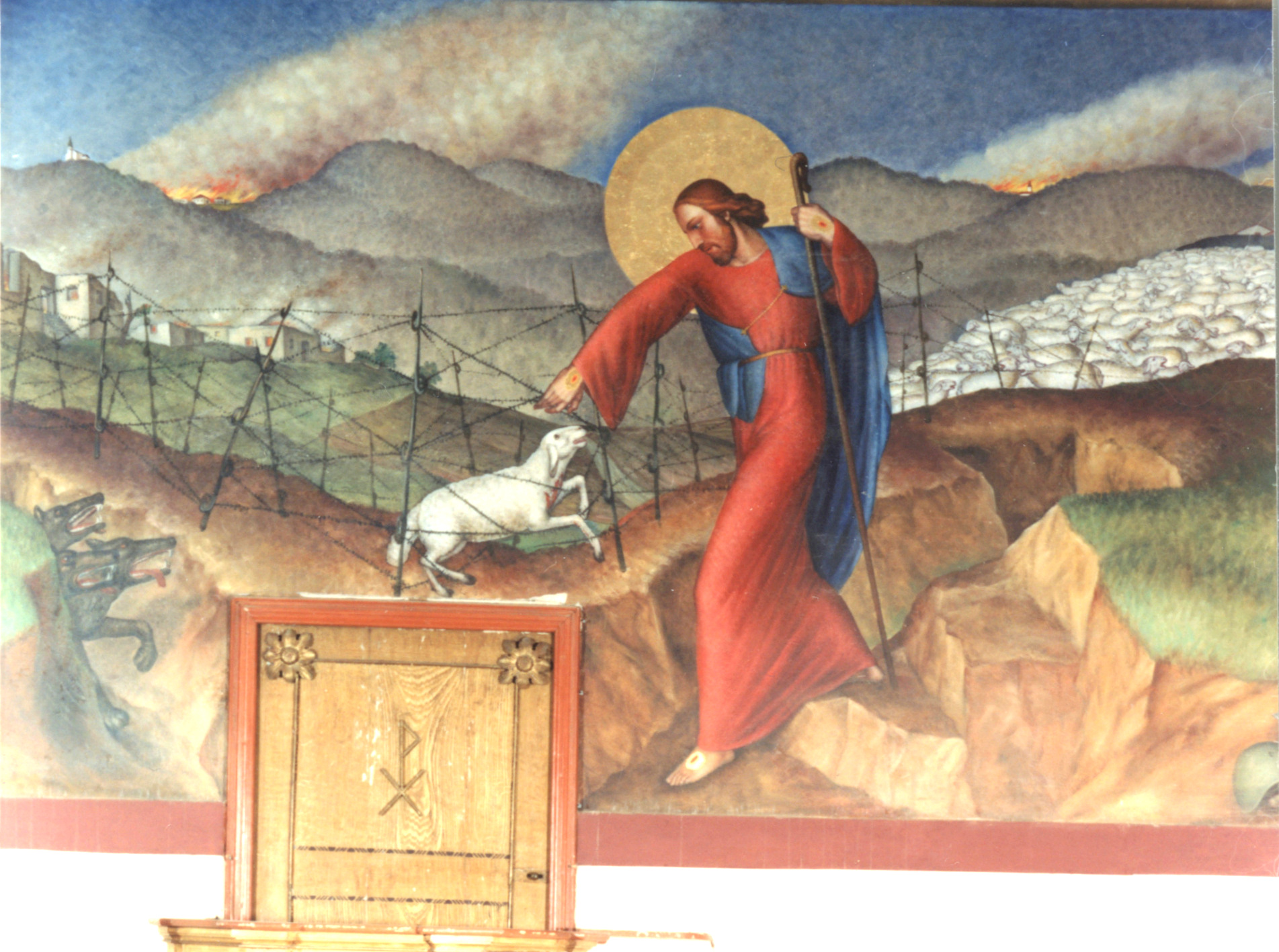 Lokev – The Good Shepherd. Christ is depicted rescuing a sheep, symbolising the Slovene nation. In the background smoke rises from burning Brkini villages. The helmet and three she-wolves are symbols of terror.
Lokev – The Good Shepherd. Christ is depicted rescuing a sheep, symbolising the Slovene nation. In the background smoke rises from burning Brkini villages. The helmet and three she-wolves are symbols of terror.
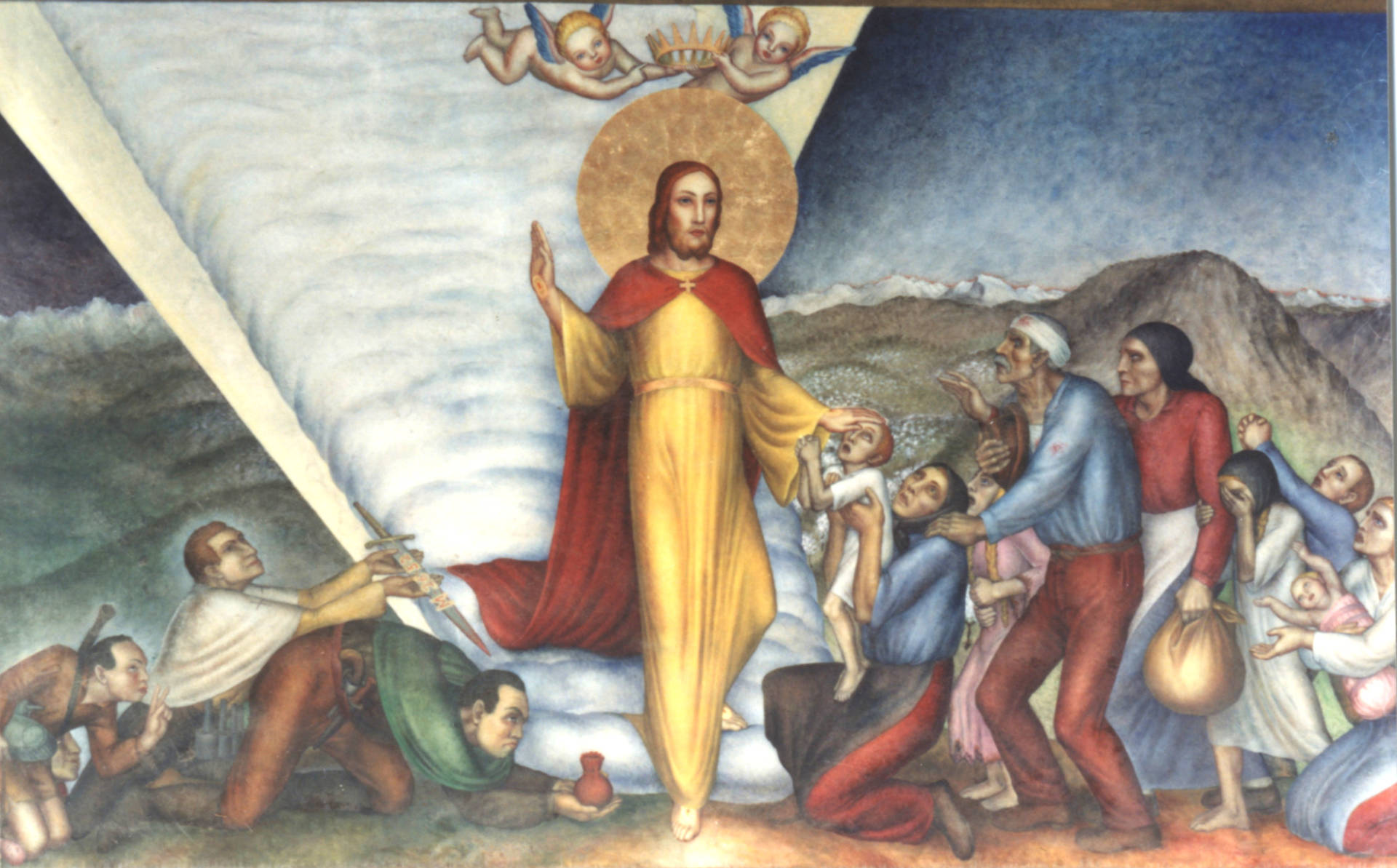 Lokev – Christ the King. Christ stands in judgement. The Slovene nation, suffering under Fascism, are counted among the good, while among the wicked are Mussolini, a representative of the Aryan race and a perjurer.
Lokev – Christ the King. Christ stands in judgement. The Slovene nation, suffering under Fascism, are counted among the good, while among the wicked are Mussolini, a representative of the Aryan race and a perjurer.
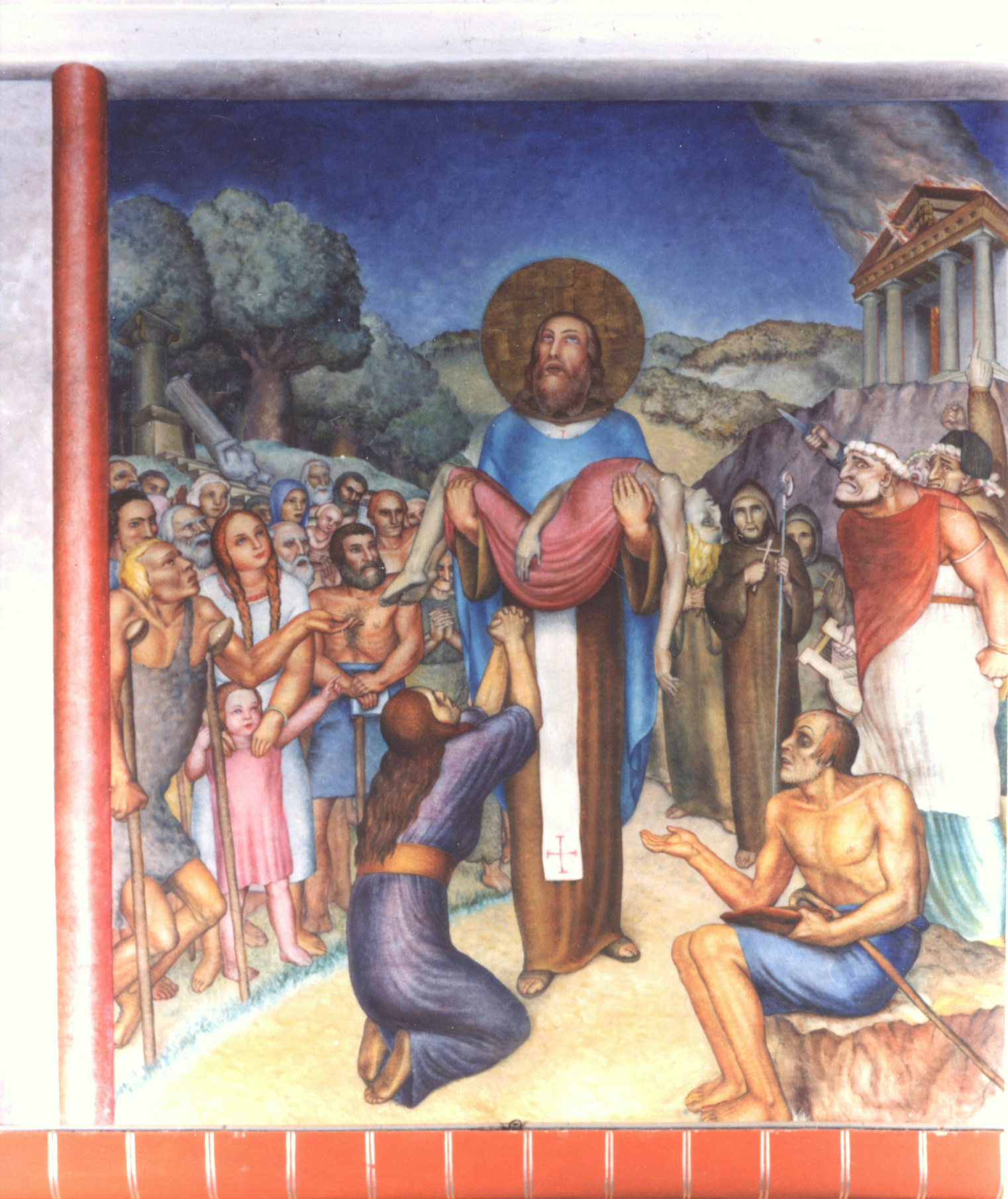 Slivje – scene from the life of St Martin of Tours. St Martin is depicted saving the poor – the Slovene nation – from the violence of Fascism.
Slivje – scene from the life of St Martin of Tours. St Martin is depicted saving the poor – the Slovene nation – from the violence of Fascism.
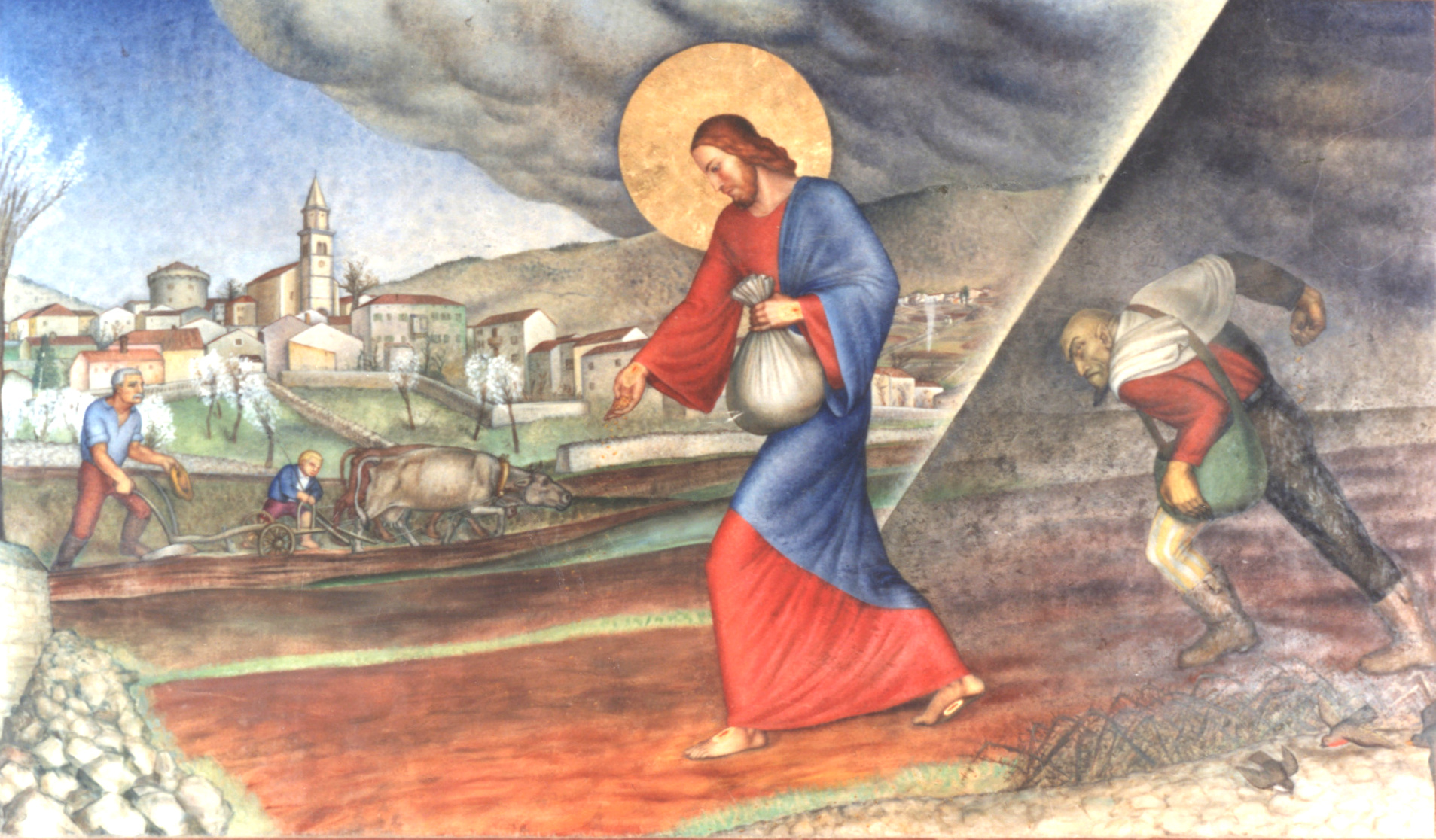 Lokev – The Sower. Christ sows the good seed by day, while at night another sower with the face of Gabriele D’Annunzio sows the bad seed. In the background black clouds are gathering over the villages of Lokev and Prelože.
Lokev – The Sower. Christ sows the good seed by day, while at night another sower with the face of Gabriele D’Annunzio sows the bad seed. In the background black clouds are gathering over the villages of Lokev and Prelože.
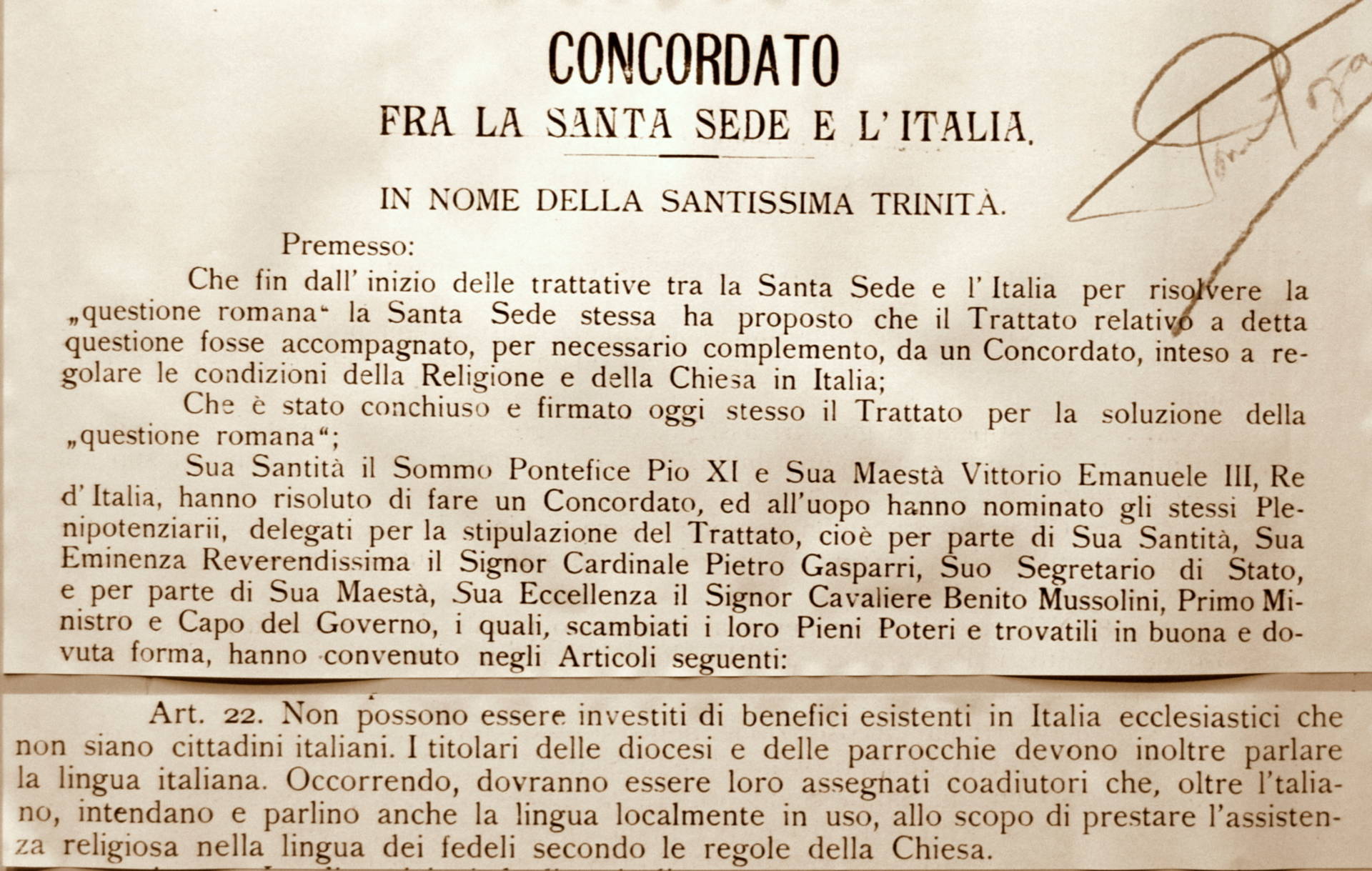 Concordat, introduction and Article 22, which affected national minorities. In 1929 the Vatican and the Kingdom of Italy signed the Lateran Pact and the concordat. Following the signing of the concordat, the position of clergy in the Julian March worsened.
Concordat, introduction and Article 22, which affected national minorities. In 1929 the Vatican and the Kingdom of Italy signed the Lateran Pact and the concordat. Following the signing of the concordat, the position of clergy in the Julian March worsened.
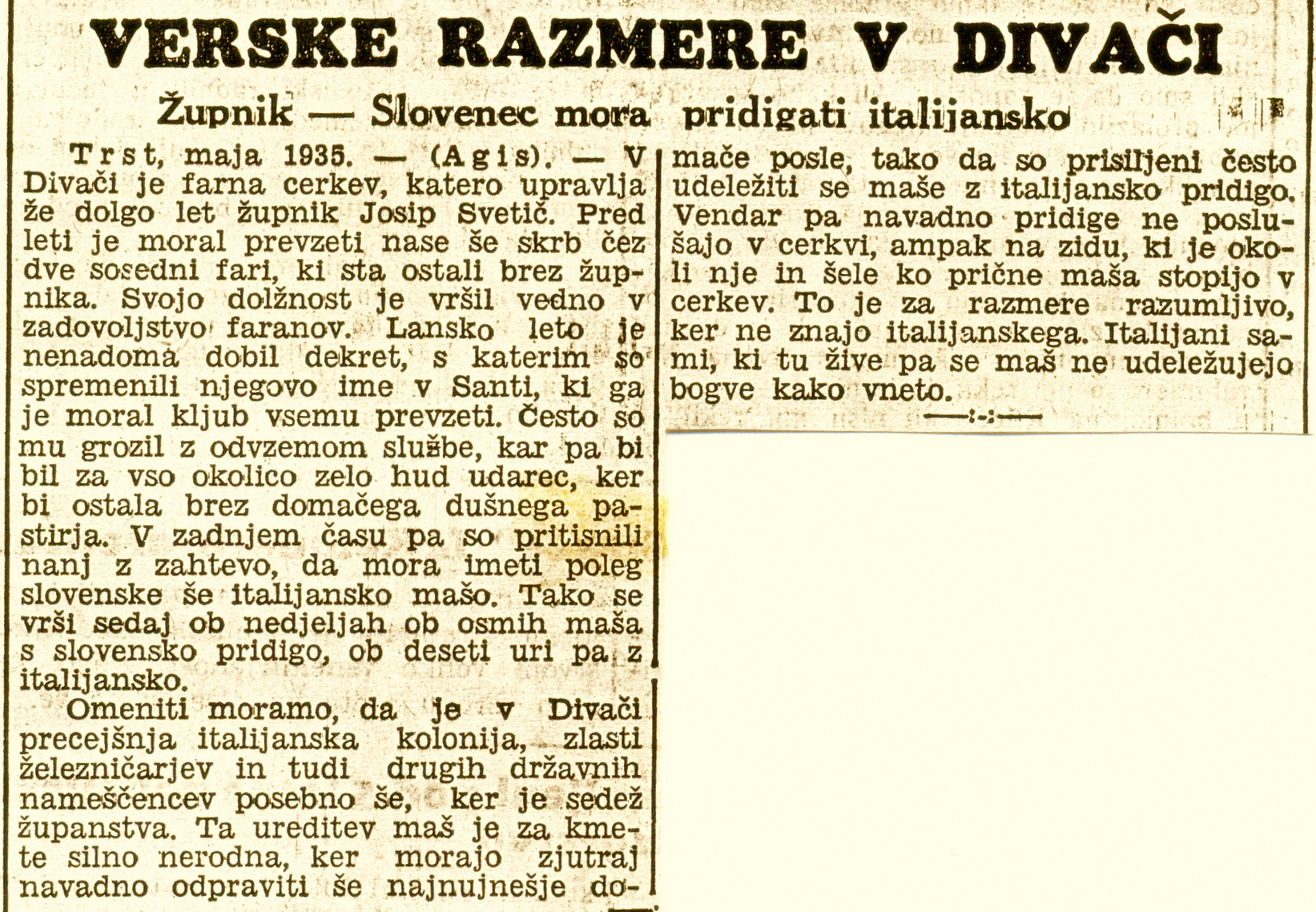
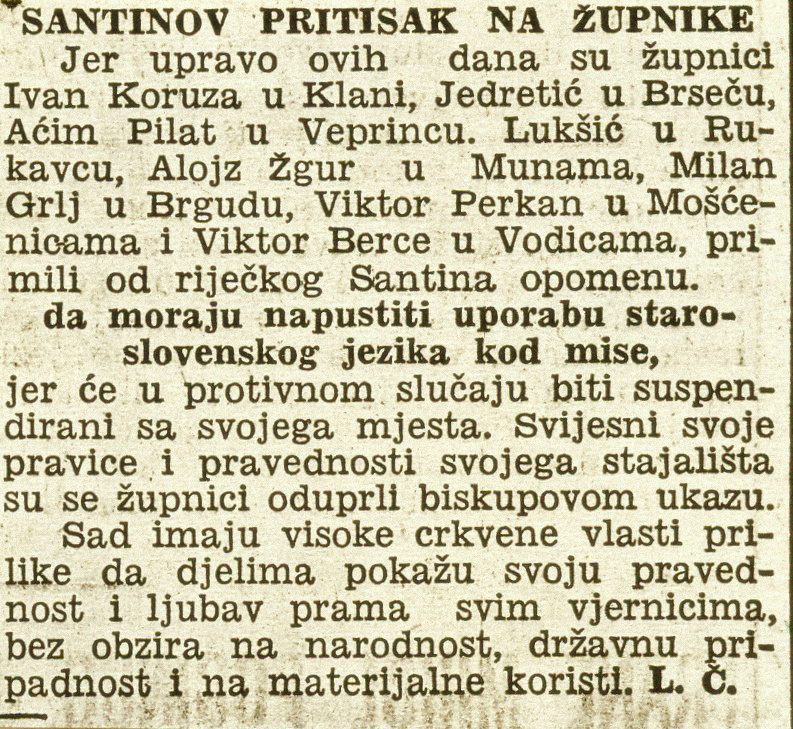
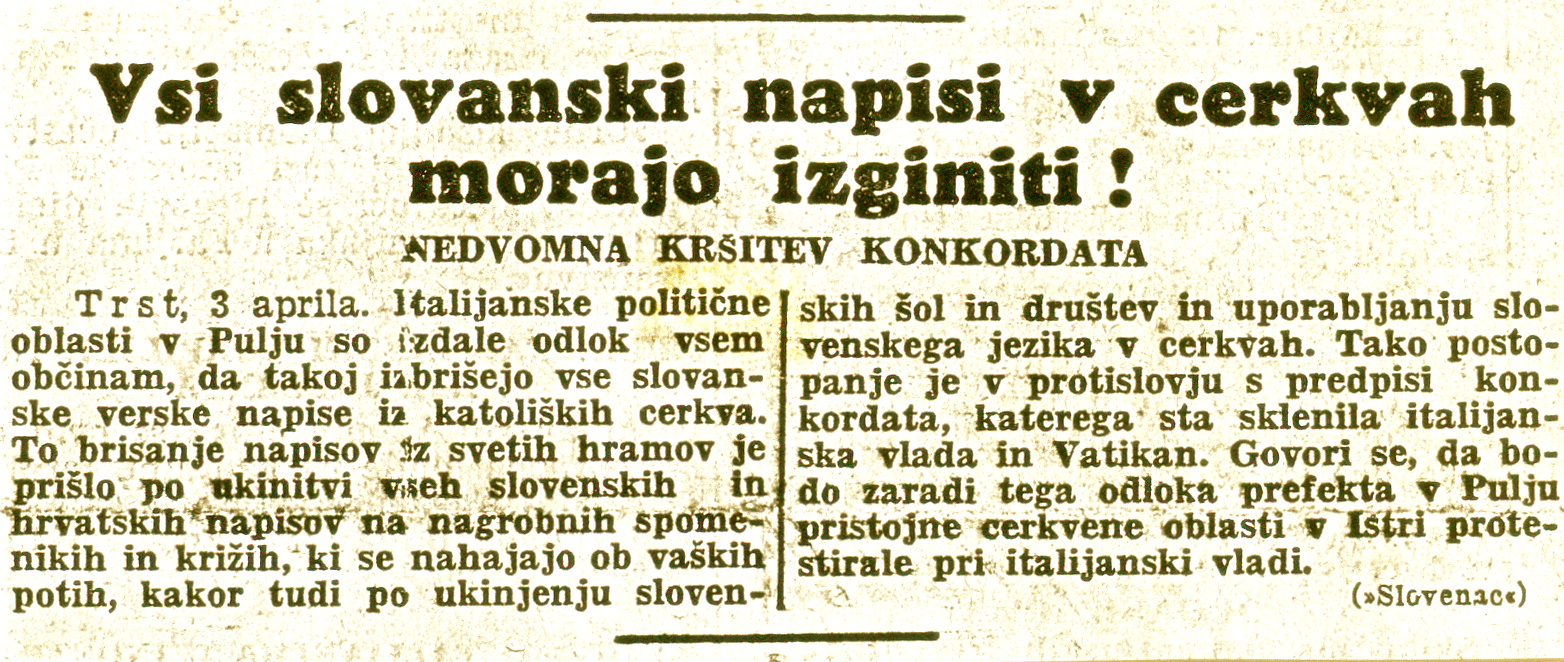

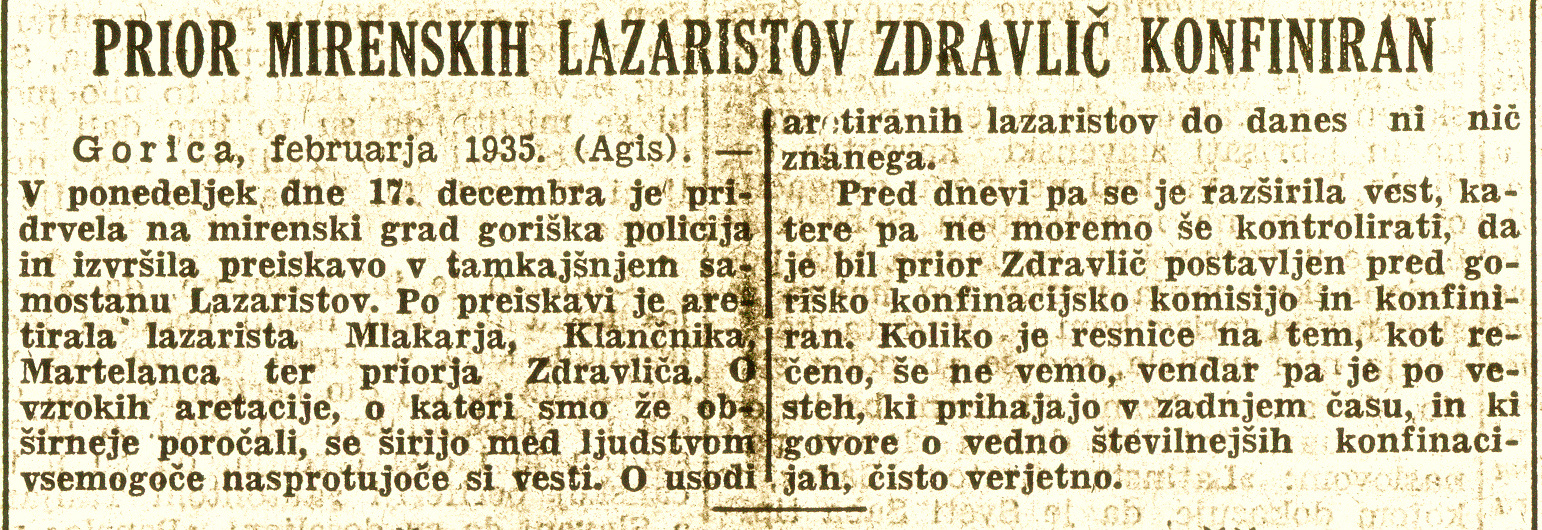

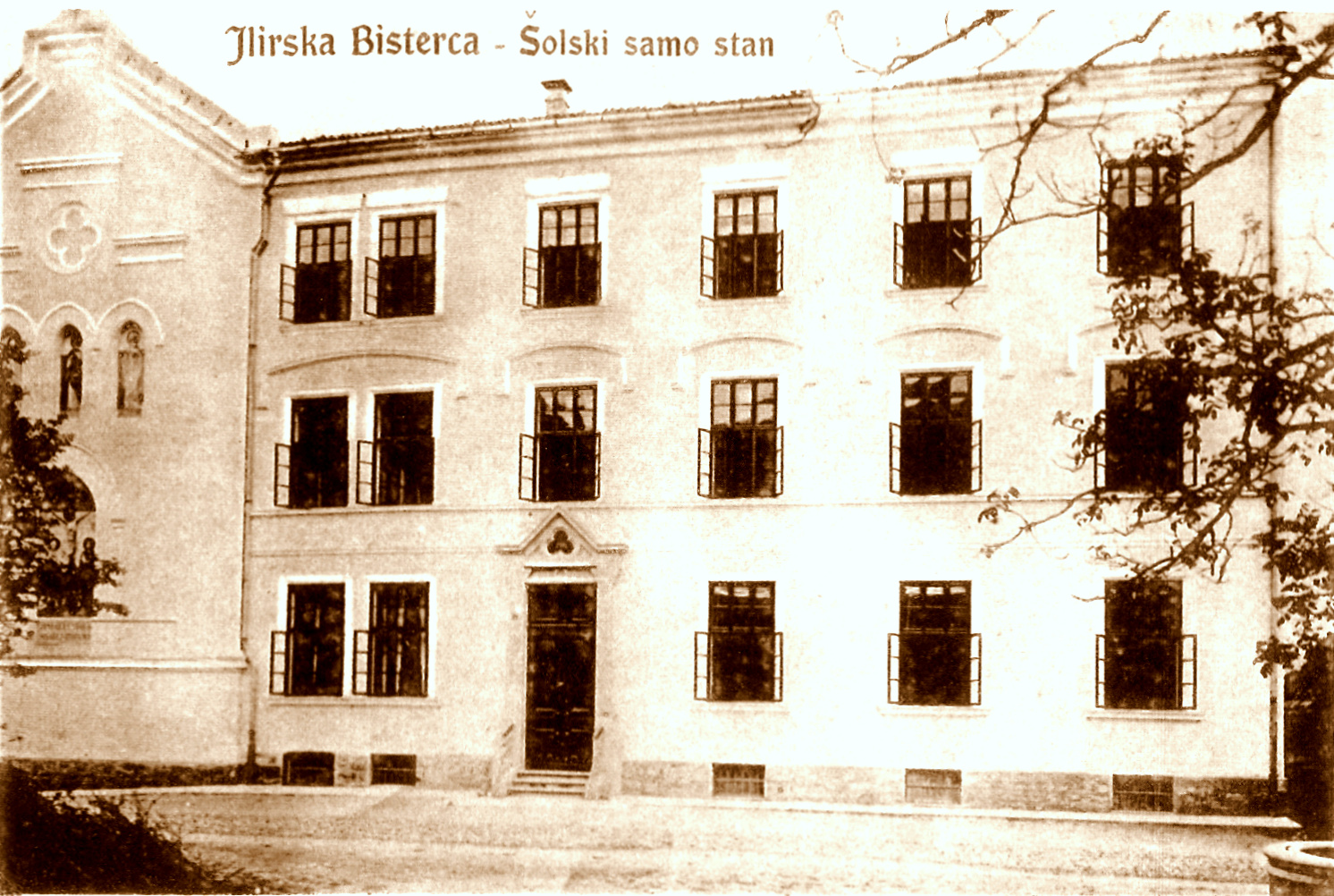 The convent school of the School Sisters of Notre Dame in Ilirska Bistrica played an important role, because the nuns secretly gave lessons in the Slovene language to the pupils and boarders.
The convent school of the School Sisters of Notre Dame in Ilirska Bistrica played an important role, because the nuns secretly gave lessons in the Slovene language to the pupils and boarders.
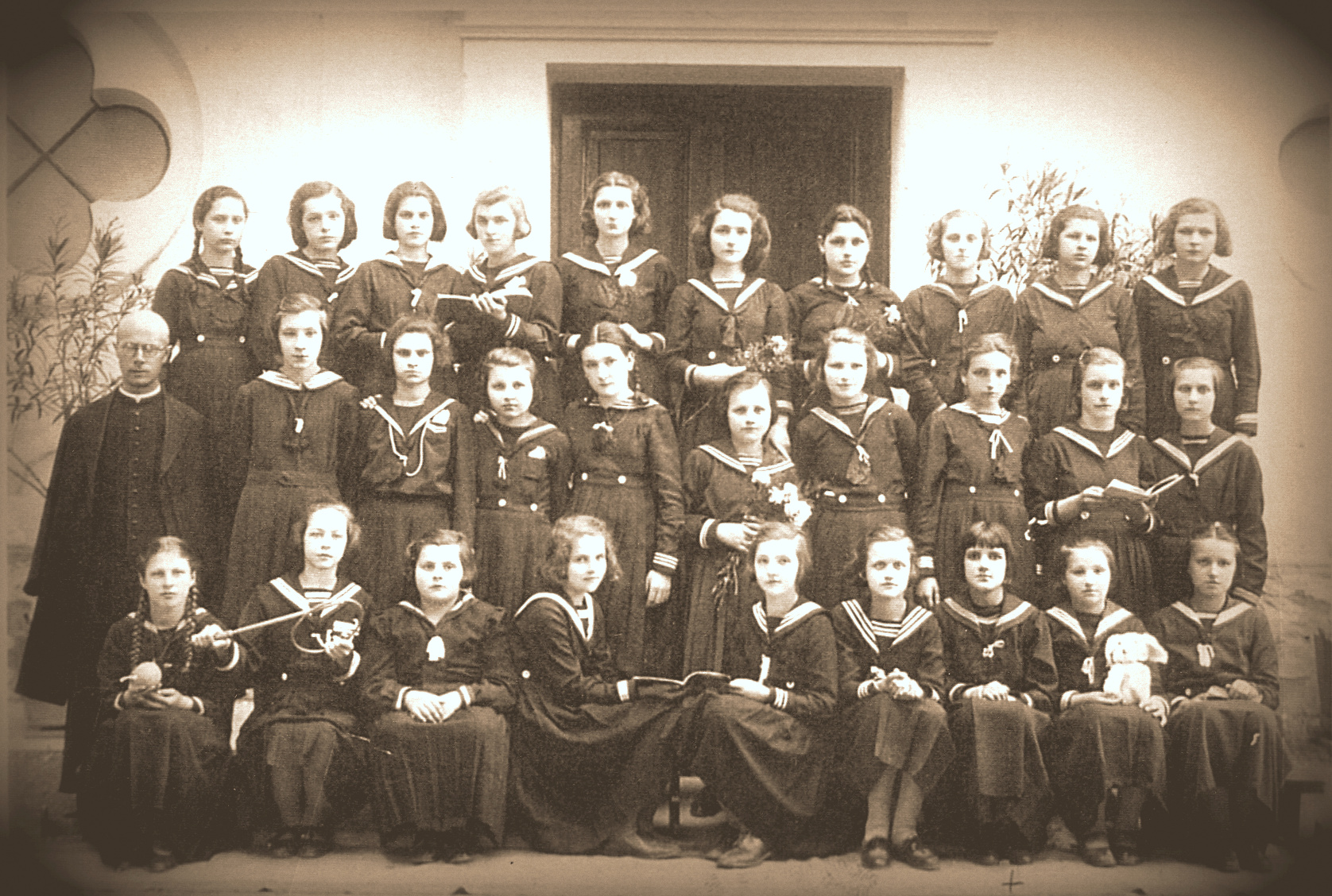 Convent school boarders in 1939. Many of them later became Partisan teachers.
Convent school boarders in 1939. Many of them later became Partisan teachers.
 Hrpelje, 1934. Members of the church choir.
Hrpelje, 1934. Members of the church choir.
 Youngsters from Slivje and Markovščina during an excursion to Mt Slavnik with Fr Viktor Berce, the parish priest of Slivje.
Youngsters from Slivje and Markovščina during an excursion to Mt Slavnik with Fr Viktor Berce, the parish priest of Slivje.
